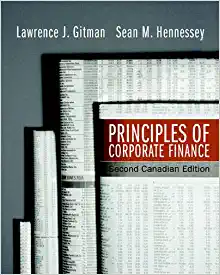Question
Hi - I need urgent help with my FIN 5550 class project on returns, betas and regression analysis for 20 stocks from the S&P 500
Hi - I need urgent help with my FIN 5550 class project on returns, betas and regression analysis for 20 stocks from the S&P 500 Index. Do we have any expert for FIN 5550 (Investment) subject and can they help?
Thanks.
*Update*
I have list of 20 stocks from S&P 500 Index. Need to create a detailed write-up of analysis results with a brief introduction describing the data sources, how you manipulated the data, how you calculated returns, how you calculated beta, a Table, and a brief summary and discussion of your findings.
Guideline: After calculating returns for your twenty stocks and the market, I have to calculate beta for each of your twenty stocks. Create a Table showing the following: Ticker, Company Name, yahoo beta, calculated beta, intercept and r-square from your regressions
In total, I need help with:
1. Write-up as a Word file including the Table described above in Guideline and your answers to the various questions.
2. An Excel spreadsheet, properly formatted, containing the ticker symbol, closing price, adjusted closing price and dates (dates should be the same for each ticker) for each of your twenty stocks and your market proxy.
3. Another Excel spreadsheet, properly formatted, detailing how, exactly, the results were calculated in the Table (i.e., replicate the detailed findings for your stocks).
The two Excel worksheets should be in one file with two different labeled worksheet tabs.Alternatively, you may use 20 Excel sheets named with the ticker symbol if you wish to combine the date, ticker symbol, closing price, adjusted closing price, and calculations and/or regressions separately for each of your 20 companies.
Questions to be answered:
You must use these 20 stocks (or, more precisely, the ticker symbols) to download data from yahoo.com. Go to yahoo.com, then Finance, then type in your ticker symbol. Next choose Historical Prices from the tabs on the left. Tag "Monthly" then choose the appropriate dates (to be determined below). Click Get Prices, scroll to the bottom of the page and download to spreadsheet (it is actually saved as a '.csv' file, but it will open okay in Excel). The last month of return data should be August 2019. Be sure to use end-of-month data! Yahoo might print a beginning of month date in the monthly output, but it should be end of month. To check this, look at the daily data and verify that the last day of the month is used in the monthly spreadsheet (it should be if you wait until after the sample period to collect your data).
2. You must determine how exactly yahoo.com calculates historical beta, then replicate their calculations. This requires the use of regression software (or functions in Excel, if you know how to do that). Note, you must calculate returns first. Is the data sorted correctly - in time order? If not, you must sort your stock prices and market prices so that the oldest prices are first, then calculate returns. Answer the following questions:
a. How, exactly, does yahoo.com calculate their beta? How many months of return data do they use? How many months of price data do you need? How do you know that you and Yahoo used the same data period? (Please note that the Yahoo Finance Help page no longer defines terms like beta.Yahoo's Help Page used to say:"The Beta used is Beta of Equity. Beta is the monthly price change of a particular company relative to the monthly price change of the S&P500. The time period for Beta is 3 years (36 months of returns) when available.")
b. Should you use closing price or adjusted price when calculating returns? Why?
c. What is the market proxy? What ticker did you use for your market proxy?
3. After calculating returns for your twenty stocks and the market, you must calculate beta for each of your twenty stocks. Create a Table showing the following: Ticker, Company Name, yahoo beta, calculated beta, intercept and r-square from your regressions.
4. Do your regression results match yahoo.com results? Why or why not?
Step by Step Solution
There are 3 Steps involved in it
Step: 1

Get Instant Access to Expert-Tailored Solutions
See step-by-step solutions with expert insights and AI powered tools for academic success
Step: 2

Step: 3

Ace Your Homework with AI
Get the answers you need in no time with our AI-driven, step-by-step assistance
Get Started


